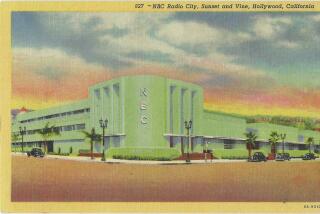Trying to Establish That Lucrative Niche : Radio: San Diego stations in 1991 narrowed their focus to find an audience that would appeal to advertisers. Innovation was out.
SAN DIEGO â In a year when stations struggled to establish and solidify their identities, the roller-coaster saga of KRMX-FM (94.9) provided a fitting parable for the local radio industry.
Unable to find a large audience in the crowded field of Top 40 stations, KKYY (Y-95) started the year with a major upheaval. Sandusky Radio, owners of the station, changed the call letters to KRMX, fired all the top management and brought in a new general manager, who essentially fired or drove away most of the stationâs employees.
In March, they tried hiring a big local name, Bobby Rich, to resurrect the âmorning zooâ concept, but that ended a few weeks later after a dispute with the new general manager, Bob Visotcky.
In August, Sandusky announced that the station had been sold to Anaheim Broadcasting for $10.1 million. That price for an FM signal was considered a steal in comparison to recent sales and said quite a bit about the depressed state of San Diegoâs radio, considering that a package of KCBQâs AM and FM sold for $23.5 million just two years earlier.
As it turned out the sale of KRMX didnât actually go through until December, and by then the price had plummeted to $7.5 million. And when Anaheim finally took over, it announced a local marketing agreement with top-rated KSON, a newfangled and controversial way for stations to run cut-rate operations by linking their sales and promotional staffs with other stations.
As the year draws to a close, KRMX is searching for a new format, one that will give it the type of programming niche that all stations are searching desperately to find. After years that saw San Diego radio as one of the biggest growth markets in the industry--two years ago local revenues increased by 17% over the previous year--revenues for San Diego actually went down in 1991, and most stations reacted by focusing their programming and laying off staff.
Unfortunately, the competition and the tight economy didnât necessarily result in better quality. Wary of doing anything to offend listeners, innovation was nonexistent. Most stations de-emphasized personalities and tried to spotlight more music.
Morning shows became the last bastion of personality for stations, which was too bad, since none displayed any real groundbreaking humor.
KFMB-FMâs (B100) decision to hire âJeff and Jerâ in April, 1990--Jeff Elliott and Jerry St. James--proved to be successful as the duo consistently hovered near the top of the ratings in 1991. Mike Berger, Jeff Prescott and Russ T. Nailz also solidified their standing at XTRA-FM (91X) with their enthusiasm for flatulence jokes, and âThe Dawn Patrolâ at KGB-FM (101.5), featuring Cookie (Chainsaw) Randolph, continued to perform well.
But none of the teams managed to generate any real excitement. Stations were more interested in streamlining their operations. XTRA, KFMB and KCBQ were among the stations that went through major staff overhauls.
Even the traditional ratings powers narrowed their focus, moving to find an audience that would appeal to advertisers. KGB-FM (101.5), once the supreme leader of local rock stations, gradually slid into a classic rock format in which it will compete with KSDO-FM (102.9) for the hearts and advertising dollars of the 25- to 54-year-old rock ânâ roller.
KGBâs move was necessitated in part by the increasing competition in the rock market. KCBQ-FM (105.3) has long programmed oldies rock; North County-based KGMG-FM (Rock 102), switched its name from Magic 102 and attempted to carve out a place for itself with a hard-rock format, and XTRA-FM (91X) tried to appeal to every other rock listener with a format that focused on modern rock.
Similar battles formed on all fronts. In the teen and urban dance arena, once powerful KKLQ (Q106) slipped, and faced competition from XHTZ-FM (Z90). KJQY-FM (Sunny 103) and KYXY-FM (96.5) battled for the easy-listening audience; while KFMB-AM (760) and KSDO-AM (1130) sought the news and information-oriented crowd.
The news battle developed into one of the more interesting competitions. After XTRA-AM (690) decided to drop news and go all-sports and attempt to woo more of a Los Angeles audience with its powerful signal, KPBS-FM (89.5), the public broadcasting station, went all news-talk during the Gulf War, aligning itself with national public broadcasting programming, and making it a major player in the news competition. KFMBâs decision in December to hire former KSDO talk host Stacy Taylor signaled that the competition was heating up.
The stations that thrived were those with a niche to themselves. KSON, which simulcasts on AM (1240) and FM (97.3), was usually No. 1 and No. 2 in ratings among listeners 12 and older with a modern country format; KIFM (98.1) did well with its mellow jazz and KFSD-FM (94.1) chugged along with its classical sound.
As the year ends, industry observers are wondering where KRMX will fall among the competition. Most believe it will challenge KCBQ and B100 for baby-boom listeners interested in oldies rock.
And, although all this behind-the-scenes maneuvering and commotion may have been fascinating fodder for industry observers, San Diego listeners are wondering what has happened to fun and lively programming on the radio.
More to Read
Sign up for Essential California
The most important California stories and recommendations in your inbox every morning.
You may occasionally receive promotional content from the Los Angeles Times.










